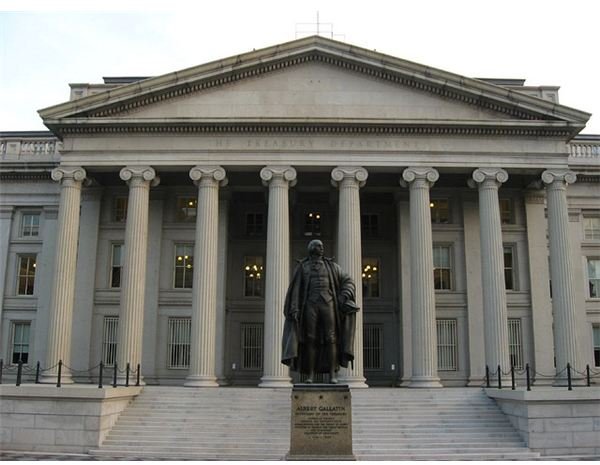Bond Investing: Government Exchange Traded Funds
Government Bond Investing with ETFs
The focus of government exchange traded funds is on the different types of government issued debt securities or bonds. Goverment bonds are considered to be the safest class of investment securities. Exchange trade funds , ETFs, give investors access to portfolios of bonds with low expenses and easy trading.
At the end of 2011, the interest rate paid by government securities remained at very low levels. Investors looking for the safety of government bonds had to accept yields at rates sometimes below one percent. At this point you may be asking: Which government bond ETFs will be the better investment choices if rates start to rise?
Treasury Bond ETFs
Treasury notes and bonds are direct debt obligations of the U.S. Treasury and the Federal government. Treasury securities are noted for their level of safety and provide the bonus of interest which is exempt from state income taxes. Treasury securities are classified as bills, notes or bonds and have maturities of up to 30 years. The iShares group of ETFs from Barclays dominates the market for Treasury bond ETFs and provide enough fund choices to fit most portfolio needs. The list of iShares Treasury ETFs includes the stock symbol and the distribution yield at the end of 2011:
- Barclays Short Treasury Bond Fund, symbol SHV, yield: 0.06%.
- Barclays 1-3 Year Treasury Bond Fund, SHY, 0.68%.
- Barclays 3-7 Year Treasury Bond Fund, IEI, 1.40%
- Barclays 7-10 Year Treasury Bond Fund, IEF, 2.35%.
- Barclays 10-20 Year Treasury Bond Fund, TLH, 2.47%.
- Barclays 20+ Year Treasury Bond Fund, TLT, 2.92%.
Always remember if interest rates start to increase the longer term ETFs will have a greater decline is share prices. Bond prices change inversely to changes in interest rates and longer term bond prices are more sensitive to rate changes.
Agency and Mortgage Securities
Other agencies of the U.S. government have the ability to issue debt securities. The majority of agency debt is mortgage backed securities – MBS – issued or guaranteed by Ginnie Mae, Fannie Mae or Freddie Mac. Agency debt often pays a higher rate of interest than Treasury debt, but is still U.S. government backed in some form. The folks at iShares again lead in this type of ETF:
- Barclays Agency Bond Fund, AGZ, yield 1.58%.
- Barclays MBS Bond Fund, MBB, 3.15%.
A fund’s reported duration can be used to compare risk and rates of funds. AGZ has a duration of just over 3 years and MBB reports an effect duration of 3.4 years. In the Treasury bond funds, the 3-7 year fund has a duration of 4.5 years. Shorter duration means the share prices will decline less if interest rates increase. These agency bond ETFs combine a shorter reported duration with a higher distribution yield. This is a good combination if rates are expected to increase.
TIPS
TIPS are Treasury Inflation Protected Securities. TIPS issued by the U.S. Treasury have their principal values adjusted for the rate of inflation. The value of the bonds as well as the interest paid will increase with the inflation rate. TIPS have become very popular as the investing world looks for protection against an increase in the cost of goods and services. The iShares Barclays TIPS Bond Fund, symbol TIP, provides the ETF choice for TIPS investing. Near the end of 2011, TIP had a distribution yield of 1.77 percent and had provided investors a one-year total return of 9.74 percent.
To show the dominance of iShares in the government bond ETF market, the iShares TIPS fund has total assets of over $19 billion. The nearest competition, the SPDR Barclays Capital TIPS ETF, symbol IPE has total assets of $360 million.
References
- Seeking Alpha Guide to U.S. Government Bond ETFs http://seekingalpha.com/article/30353-a-guide-to-u-s-government-bond-etfs
- iShares Fixed Income Funds http://us.ishares.com/product_info/fund/index/FI.htm
- Photo Credit: Ken Lund on Flickr, Creative Commons Attribution
